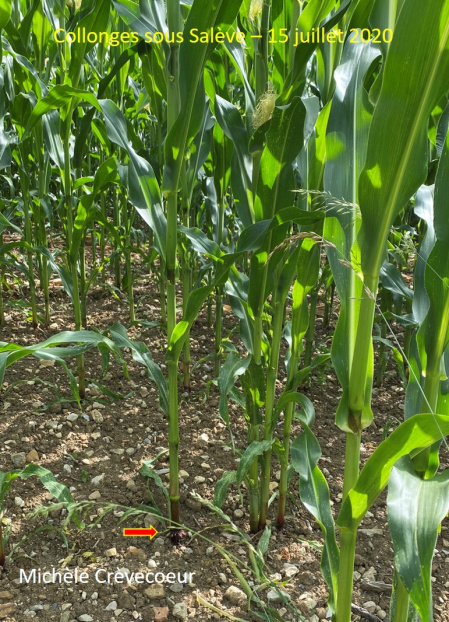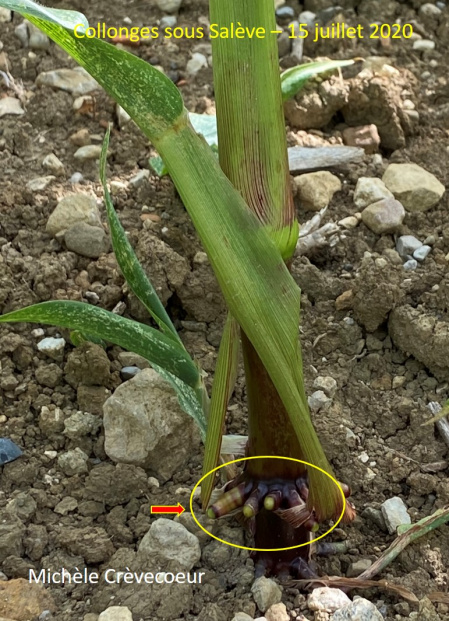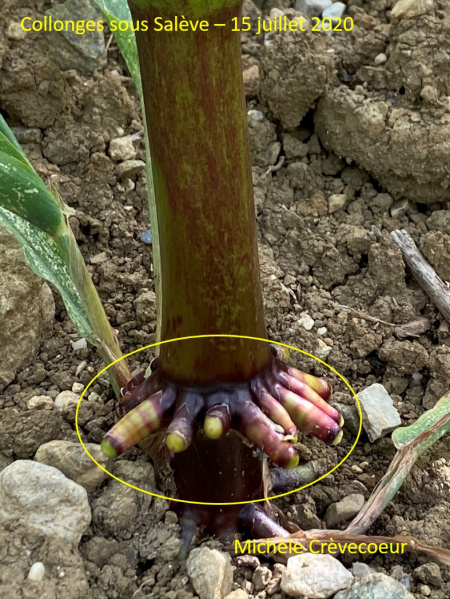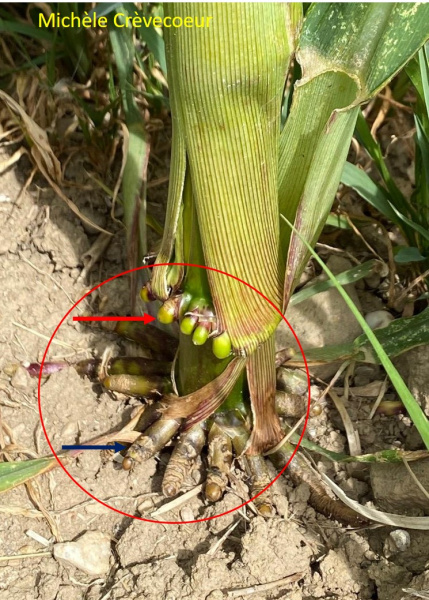Aerial adventitious roots: examples of ivy and maize
1/ Ivy : The plant climbs quickly and develops aerial adventitious roots from its stem which are used to firmly attach itself to its support, either a plant (tree) or a mineral (wall). They are spiked roots. On the other hand, an ivy plant has also subterranean roots that extend into the soil, attaching the plant to the ground and absorbing water and mineral from the soil.
Below photographs of an ivy growing at the surface of a maple tree. On the right part of the plant attached to the tree trunk by adventitious roots (red arrows). Ivy is an epiphyte growing on another plant without parasitizing.
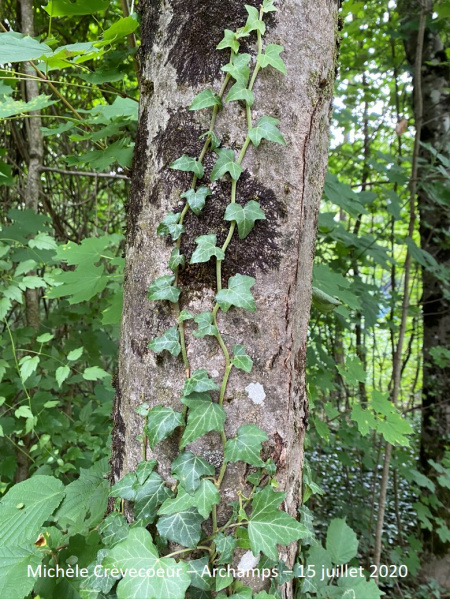
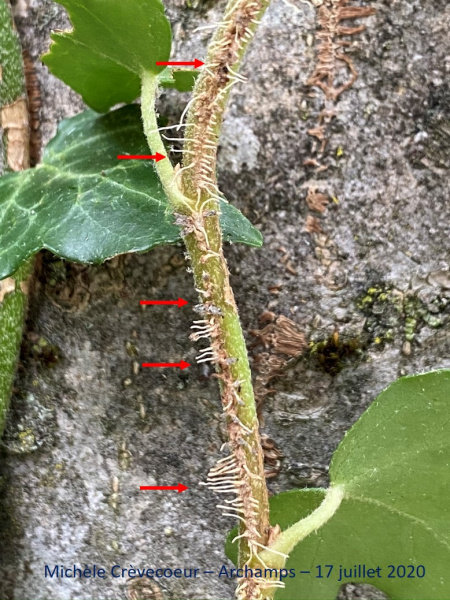
2/ Adventitious roots of maize.
The root system of maize is composed of an embryonic root system (primary root or radicle and the seminal roots) and of a post embryonic root system which is made up by shoot-borne roots, formed at successive nodal structures of the shoot. Shoot – borne roots formed in soil are designated crown roots, while shoot – borne roots initiated above soil level are termed brace roots. The shoot borne – roots make up the major proportion of the adult maize root system.
Brace roots are illustrated on the pictures below. These specialized adventitious roots growing from the stem into the soil help the tall corn plants that lack woody tissues and secondary growth to stay upright.
On the photograph at the bottom right two levels of adventitious roots are evident (blue and red arrows). These specialized adventitious roots growing from the stem into the soil help the tall corn plants that lack woody tissues and secondary growth to stay upright.
